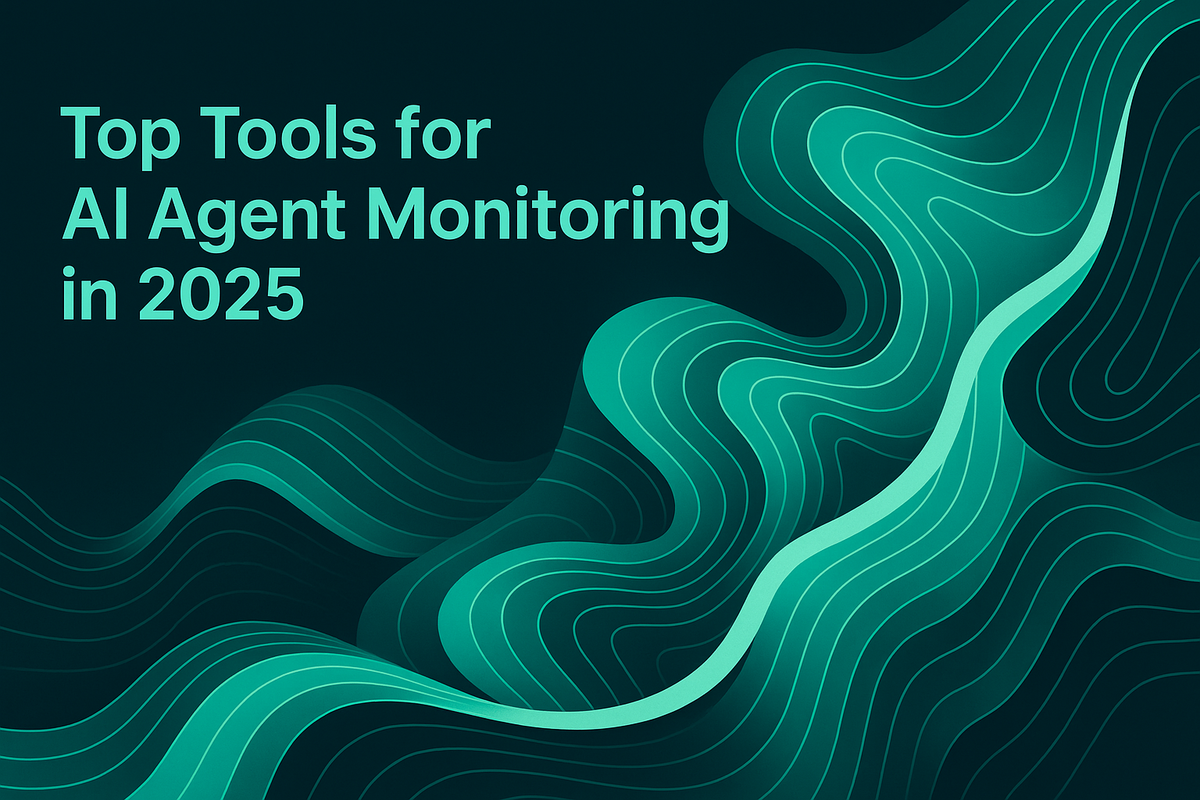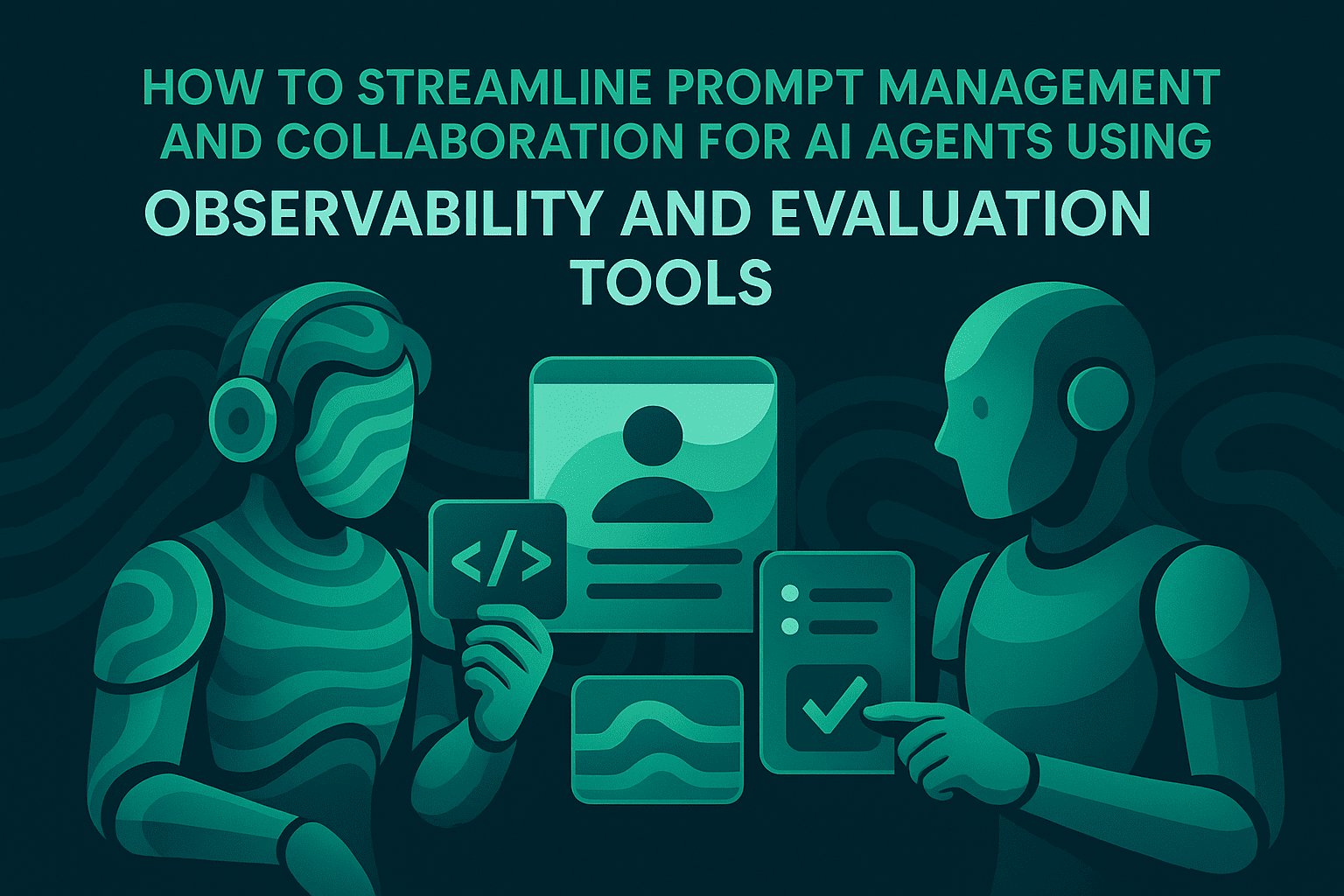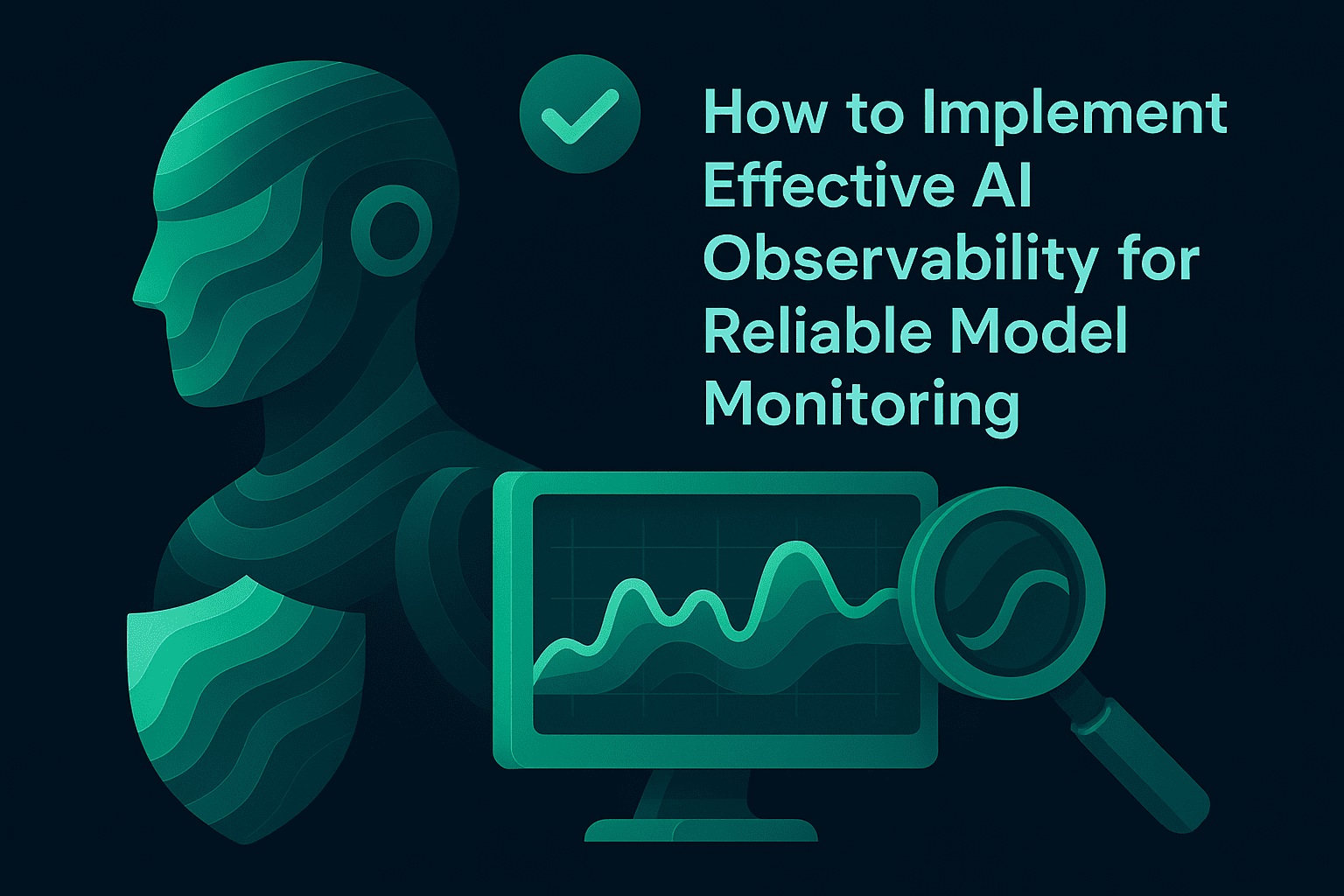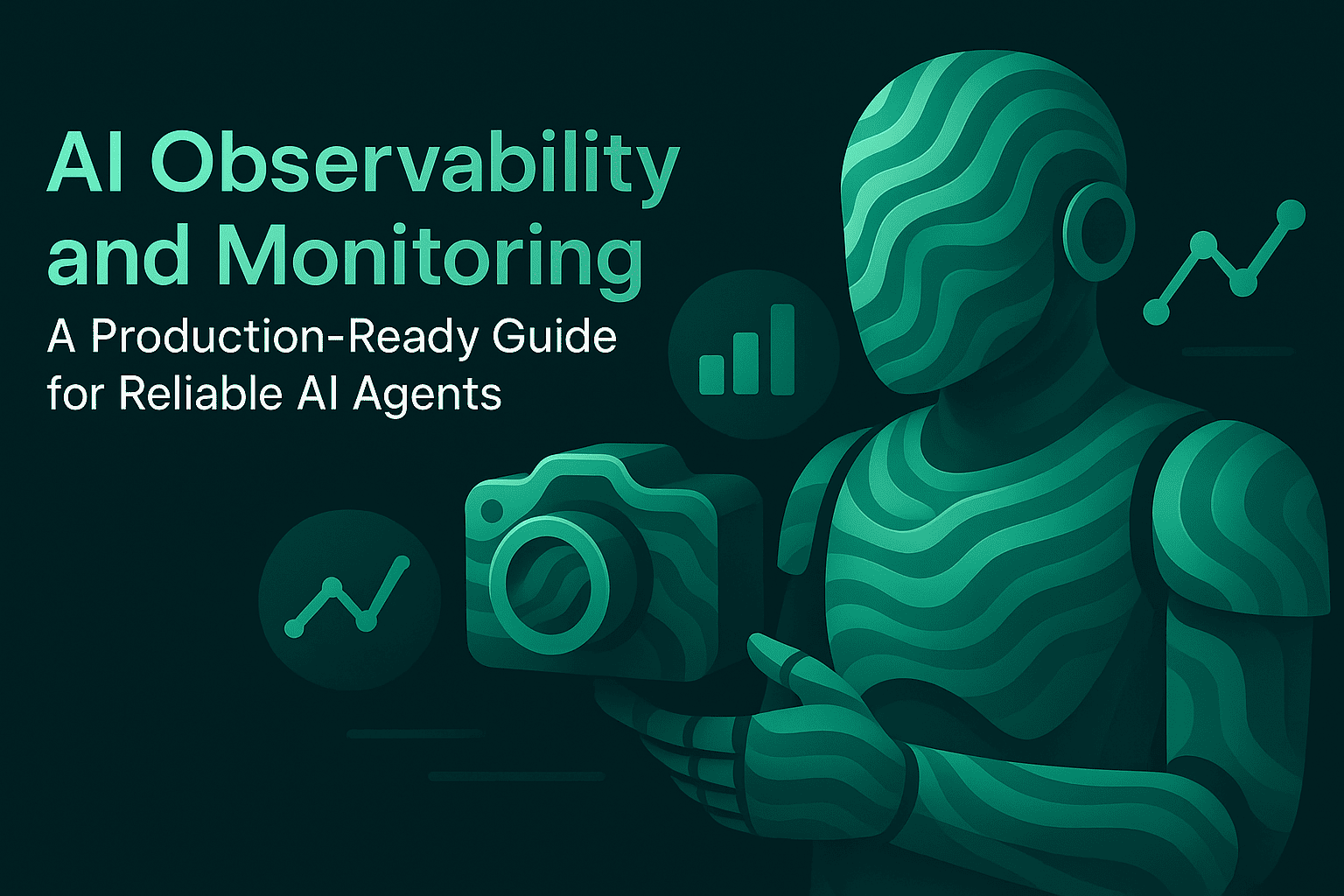Top Tools for AI Agent Monitoring in 2025

TL;DR
Monitoring AI agents in production is not the same as monitoring traditional applications. It requires tracking reasoning steps, retrieval quality, prompt performance, and safety metrics. This guide explains what makes an AI agent monitoring tool effective in 2025, compares the top platforms, and shares best practices for maintaining reliability at scale.
1. Introduction
AI agents are moving from prototypes to production systems that power customer support, automation, and operational workflows. Unlike traditional applications, these agents are non-deterministic, their behavior can change depending on context, data, and prompt design.
AI agent monitoring provides visibility into each step of an agent’s reasoning, including prompts, tool calls, retrieval operations, and generated responses. It helps teams detect drift, debug hallucinations, measure quality, and ensure outputs align with business and compliance requirements.
When evaluating monitoring tools, teams should focus on five key criteria:
- Distributed tracing and session-level visibility
- Continuous evaluation and scoring
- Safety and compliance monitoring
- Data curation and human-in-loop feedback
- Ease of integration and scalability
2. What Makes a Tool Truly Monitoring-Ready for Agents
A monitoring platform that supports AI agents should include:
- End-to-end tracing to log every reasoning step and context transition
- Drift detection and statistical analysis to catch gradual degradation
- Human-AI evaluation loops for nuanced judgment and reliability
- SDK and API integrations for seamless observability
- Real-time alerting and dashboards for cross-team visibility
- Prompt management and security checks to prevent jailbreaks or prompt injection attacks
Platforms that combine these elements enable both proactive quality improvement and reactive debugging.
3. Tool Comparisons & Deep Dives
Quick Comparison Table
| Tool | Core Strength | Evaluation Depth | Open Source | Ease of Integration | Best For |
|---|---|---|---|---|---|
| Maxim AI | Full-stack observability, evaluation, and simulation | Advanced (LLM + human-in-loop) | ❌ | SDKs and APIs for quick integration | Production-grade and enterprise AI systems |
| Langfuse | Tracing and prompt logging | Moderate | ✅ | SDKs in Python, TypeScript | Developers building LLM apps |
| Arize Phoenix | Drift detection and data visualization | Statistical | ✅ | Python-based; works with embeddings and datasets | ML and data teams |
| Helicone | API-level request tracing and analytics | Basic | ✅ | Drop-in proxy setup | Small teams and prototypes |
| Lunary | Lightweight LLMOps dashboard | Basic | ✅ | Simple JavaScript SDK | Startups and prompt engineers |
Maxim AI
Best For: Enterprises and teams deploying agents in production
Website: Maxim AI
Overview:
Maxim AI provides a unified platform for observability, evaluation, and simulation of AI agents. It is built for teams managing LLM-powered systems at scale and focuses on traceability, continuous evaluation, and safe deployment.
Key Features:
- Distributed tracing and session logging for multi-turn workflows (documentation overview)
- Continuous evaluations with deterministic rules, statistical monitors, and configurable evaluators (online evaluation overview)
- LLM-as-a-judge framework for scalable subjective scoring with human validation (LLM-as-a-judge guide)
- Simulation environments to test agent behavior across scenarios (agent simulation testing)
- Prompt management and safety monitoring to mitigate hallucinations and prompt injection (prompt management 2025 guide, hallucination detection)
Use Cases:
- Monitoring retrieval-augmented generation (RAG) systems
- Evaluating outputs with LLM and human feedback
- Pre-release testing and post-release monitoring
Integration:
SDKs allow direct instrumentation - Maxim’s SDK overview.
Langfuse
Best For: Developers needing lightweight observability
Website: Langfuse
Overview:
Langfuse is an open-source tracing and analytics tool for LLM applications. It focuses on tracking prompts, responses, and metadata for debugging and performance evaluation.
Key Features:
- SDKs for Python and JavaScript
- Visualization of trace trees and token usage
- Metadata tagging and custom scoring
- Lightweight dashboard for interactive debugging
Use Cases:
- Debugging agent reasoning
- Monitoring latency and cost
- Capturing feedback during early prototyping
Integration:
Setup through environment variables and minimal code changes. Works well with OpenAI and Anthropic APIs.
Limitations:
- No built-in safety monitoring
- Lacks advanced evaluators or simulation tools
Arize Phoenix
Best For: ML and data teams analyzing embedding performance and drift
Website: Arize Phoenix
Overview:
Arize Phoenix is an open-source framework for model and embedding analysis. It helps teams visualize drift, compare models, and inspect embedding clusters.
Key Features:
- Embedding visualization and cluster analysis
- Data and model drift detection
- Statistical evaluation dashboards
- Support for structured and unstructured data
Use Cases:
- Tracking embedding drift in RAG systems
- Evaluating vector quality over time
- Comparing retrieval pipelines
Integration:
Python integration for local or notebook environments. Works seamlessly with standard ML data formats.
Limitations:
- Lacks conversational trace monitoring
- Does not include LLM-based evaluators
Helicone
Best For: Simple API-level observability
Website: Helicone
Overview:
Helicone provides a proxy-based approach to capture request and response data from LLM APIs. It gives instant visibility into usage patterns and latency.
Key Features:
- Plug-and-play proxy setup
- Request and response logging
- Token and latency tracking
- JSON exports for analysis
Use Cases:
- Tracking prompt-response pairs
- Analyzing usage and cost metrics
- Debugging API performance
Integration:
No code changes beyond replacing API keys. Ideal for small teams or prototypes.
Limitations:
- No evaluation or drift detection features
- Limited support for multi-turn workflows
Lunary
Best For: Prompt engineers and startups
Website: Lunary
Overview:
Lunary is a lightweight LLMOps dashboard that focuses on monitoring prompts, completions, and feedback. It helps teams refine prompts based on observed performance.
Key Features:
- Prompt and response logging
- Evaluation and feedback scoring
- Simple dashboard for visualization
- Collaboration for team experimentation
Use Cases:
- Iterative prompt testing
- Capturing user feedback
- Lightweight performance tracking
Integration:
SDKs for JavaScript and Python with minimal setup.
Limitations:
- Does not offer safety or governance modules
- Lacks deep observability across multi-turn sessions
5. How to Choose the Right Tool
| Team Type | Primary Need | Recommended Tool |
|---|---|---|
| Enterprise with compliance and scale | End-to-end observability, safety, evaluation depth | Maxim AI |
| Developer or small startup | Lightweight debugging and visibility | Langfuse |
| ML/Data science team | Embedding drift and statistical evaluation | Arize Phoenix |
| Early prototype or hackathon | Minimal setup and quick metrics | Helicone |
| Prompt engineering team | Feedback collection and iteration | Lunary |
Rule of thumb:
- Choose Maxim AI when reliability, safety, and human evaluation matter.
- Choose Langfuse or Helicone when simplicity and quick setup are priorities.
- Choose Arize Phoenix for embedding-driven systems with drift risks.
6. Best Practices for Using Monitoring Tools in Production
- Instrument everything: Capture prompts, retrievals, and responses using a consistent schema (SDK overview).
- Sample strategically: Evaluate a percentage of live traffic to balance cost and insight.
- Automate and augment: Combine statistical and LLM-as-a-judge evaluators (online evaluations).
- Monitor safety: Track hallucination and injection risks (hallucination detection guide).
- Close the loop: Feed monitoring data into evaluation datasets and simulation tests (agent simulation testing).
7. What’s Next in AI Agent Monitoring (2025–2027)
- LLM-native observability stacks will integrate tracing directly into model runtimes.
- Hybrid evaluators will blend automated scoring with domain expert review.
- Cross-agent monitoring will track interactions across multi-agent systems.
- Federated monitoring will enable privacy-preserving observability.
- Simulation-to-production feedback loops will automate evaluation updates.
8. FAQ
Q1. What is the difference between model monitoring and agent monitoring?
Model monitoring focuses on accuracy and drift, while agent monitoring tracks multi-step reasoning, retrieval quality, and contextual accuracy across sessions.
Q2. Which tool is best for enterprise-scale monitoring?
Maxim AI offers comprehensive tracing, evaluation, and simulation capabilities with safety and compliance controls.
Q3. How can you measure hallucination rates?
Use automated evaluators and deterministic checks to flag ungrounded outputs. Maxim’s hallucination mitigation guide explains common techniques.
Q4. When should human evaluation be used?
Use human-in-loop review for high-stakes tasks or where LLM evaluators show high disagreement. See Maxim’s LLM-as-a-judge explainer.
Q5. How do I balance cost and coverage in production evaluation?
Start with low-frequency sampling and expand coverage based on failure rates and business impact.
9. Conclusion & Call to Action
Monitoring AI agents is essential for building reliable, safe, and consistent systems. The right platform should combine observability, evaluation, safety, and feedback to continuously improve performance.
Explore Maxim’s documentation to learn how to instrument your agents, or book a demo to see Maxim AI in action.


